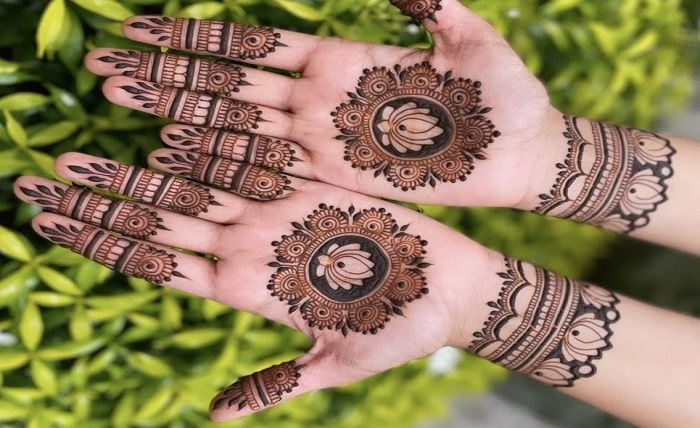Mehandi Designs: Exploring the Art, Styles, and Cultural Significance

Mehandi designs have been an integral part of cultural traditions for centuries, adorning the skin with intricate patterns and symbols. Originating from ancient civilizations, mehandi, also known as henna, has evolved into a form of art that transcends time and borders. In this comprehensive guide, we will delve into the history, various styles, application process, and the cultural significance of mehandi designs.
The Origins and Cultural Significance of Mehandi
The art of applying mehandi dates back over 5,000 years, with roots tracing to ancient Egypt. Cleopatra is said to have used henna to decorate her nails and hair. The practice spread across continents, reaching India, where it became deeply embedded in cultural and religious ceremonies. In Hinduism, mehandi symbolizes prosperity and fertility, often applied during weddings and festivals like Diwali and Karva Chauth.
Traditional Styles of Mehandi Designs
Mehandi designs vary significantly across different cultures and regions, each bringing a unique flair to the art form. Some of the most prominent styles include:
1. Indian Traditional Mehandi
Indian mehandi designs are renowned for their intricate patterns and detailed work. They often feature:
-
Paisley Motifs: Teardrop-shaped designs with a curved upper end, symbolizing fertility and life.
-
Floral Patterns: Detailed flowers like roses, lotuses, and jasmine, representing beauty and purity.
-
Peacock Designs: Elegant peacock motifs denoting grace and beauty.
-
Bridal Designs: Elaborate patterns covering the hands and feet, sometimes incorporating images of the bride and groom.
2. Arabic Mehandi
Originating from the Middle East, Arabic mehandi designs are characterized by:
-
Bold Lines and Dots: Creating a striking contrast on the skin.
-
Floral and Vine Patterns: Simplistic yet elegant, focusing on flowers and leaves.
-
Placement: Typically applied to the hands and feet, extending to the forearms and lower legs.
3. African Mehandi
African mehandi designs are distinct, often featuring:
-
Geometric Patterns: Bold shapes and lines creating a modern look.
-
Body Art: Covering larger areas of the body, including arms, legs, and back.
-
Symbolism: Designs often carry deep meanings, representing various aspects of life and culture.
4. Western or Modern Mehandi
With globalization, mehandi has found its way into Western cultures, leading to:
-
Minimalist Designs: Simple patterns like hearts, stars, and initials.
-
Temporary Tattoos: Using mehandi as a safe alternative to permanent tattoos.
-
Occasional Art: Applied for festivals, parties, and other events.
The Application Process: From Paste to Pattern
The application of mehandi involves several meticulous steps to ensure a rich, lasting stain:
-
Preparation of Henna Paste: Made from the powdered leaves of the henna plant (Lawsonia inermis), mixed with water, lemon juice, or tea to form a smooth paste.
-
Application: Using a cone, brush, or stick, the paste is applied to the skin in desired patterns.
-
Drying: After application, the paste dries and begins to crack.
-
Setting: The dried paste is wrapped to lock in body heat, enhancing the color.
-
Removal: After 2-6 hours, the paste is gently scraped off, revealing a pale orange stain that darkens to reddish-brown over 24-72 hours.
Caring for Your Mehandi: Ensuring a Dark and Lasting Stain
To achieve the darkest and most lasting mehandi stain, consider the following tips:
-
Extended Application: Keep the paste on for 6-8 hours or overnight.
-
Heat Retention: Apply a mixture of lemon juice and sugar to the dried paste to keep it moist and enhance color.
-
Aftercare: Avoid water contact for the first 24 hours post-removal to allow the stain to set.
Mehandi in Modern Times: A Fusion of Tradition and Trend
In contemporary times, mehandi has transcended its traditional roots, blending with modern aesthetics:
-
Fashion Statements: Incorporating mehandi designs into everyday fashion, such as ankle bracelets or finger rings.
-
Temporary Body Art: Using mehandi as a non-permanent tattoo alternative for self-expression.
-
Event Decoration: Applying mehandi designs during festivals, corporate events, and other celebrations.
Conclusion
Mehandi designs are more than just decorative patterns; they are a testament to cultural heritage, artistic expression, and personal significance. Whether it’s the intricate bridal designs of India, the bold patterns of Arabia, or the minimalist styles favored in the West, mehandi continues to captivate and inspire. As trends evolve, the essence of mehandi remains rooted in tradition, yet open to innovation, ensuring its place in the tapestry of human expression for generations to come.
FAQs
1. How long do mehndi designs last?
Mehndi designs typically last 1-3 weeks, depending on skin type and aftercare. Proper moisturizing can extend their longevity.
2. Can mehndi designs cause allergies?
Natural henna is safe, but black henna with PPD can cause allergic reactions. Always use pure, organic henna for mehndi designs.
3. What’s the best way to make mehndi designs darker?
Leave the henna paste on longer (4-6 hours), avoid water for 24 hours, and apply a sugar-lemon mixture to seal the design.
4. Are there mehndi designs for small hands?
Yes! Delicate, minimalist mehndi designs with thin lines and small motifs are perfect for petite hands.
5. Can I apply mehndi designs at home?
Absolutely! With practice and a good henna cone, you can create beautiful mehndi designs at home. Start with simple patterns and gradually try complex ones.





